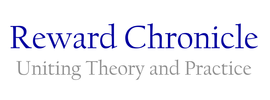|
With the ever-increasing importance to companies of offering a high calibre employment proposition in order to attract and retain high calibre employees, researchers in Spain examined three prevalent forms of employee benefits strategies employed by companies to manage employee benefits, namely fixed benefits, flexible benefits, and flex benefits plans, and the effect of these different strategies on company’s' employee attraction and retention capacity. The findings indicated that companies with more flexible benefits offerings had a greater attraction and retention capacity.
Key Topics: Employee benefits; Flexible benefits; Employee attraction; Employee retention
Title of Reviewed Article: Flexibility of benefit systems and firms’ attraction and retention capacities.
Researchers: M. Dolores Vidal-Salazar, Eulogio Cordón-Pozo, and José M. de la Torre-Ruiz (University of Granada). Publication: Employee Relations, 2010, Vol. 38 No. 4, pp. 487-504. __________________________________________________________________________ Setting the Scene The knowledge, skills, and abilities of employees are of critical strategic importance to most companies, and key to developing and maintaining competitive advantage (Porter, 2001). Additionally, employees are increasingly aware of their strategic value and seeking employers who match their needs (Chew, 2004). Human resources practices have been shown to have the ability to advance the capacity of companies to attract and retain talented employees (Miles & Mangold, 2004), as well as to increase employee commitment and performance (Whitener, 2001). Among these HR practices, the benefits offered to employees are one of the most influential in affecting behavior (Davies, 2001), and have been shown improve companies’ attraction and retention capacity (Hillebrink et al., 2008). Benefits typically encompass all incentives, aside from compensation (salary and bonuses), that companies provide to employees (Milkovich & Newman, 2007). Given the importance of benefits to employees, it is important that companies consider the best way in which to offer them (Giancola, 2013), however, the differences in the attitudes and needs of employees can make the design of the optimal benefits system difficult (Webb Day et al., 2014). As such, growing research advocates the role of companies employing a more flexible approach to their employee benefits offering, giving employees greater freedom to select their benefits (De Gieter & Hofmans, 2015). This study reviews three distinct benefits systems: fixed benefit systems, which can be considered the simplest type of benefits system, whereby the benefits package is exclusively determined by the company; flexible benefit systems, which allow for the employee to participate in the determination of their benefits package; and flex plans, which have the greatest flexibility and permit the employee to choose benefit types as well giving some ability for employees to determine the proportion of their total reward package that is accounted for by benefits (Barringer & Milkovich, 1998). This study proposed two research hypotheses: Hypothesis 1 – “Firms offering benefit systems with a higher degree of flexibility will have a higher attraction capacity of core employees.” Hypothesis 2 – “Firms offering benefit systems with a higher degree of flexibility will have a higher retention capacity of core employees.” How the research was conducted This study collected data via the employee benefits company Edenred. A questionnaire developed by the researchers was completed by 308 human resources managers from Spanish companies. The questionnaire related to the details and effectiveness of the benefit systems used by these companies, as well as information relating to attraction and retention of employees. Participating companies were from various industries, but the majority came from general services, tourism and construction. Details were also collected for control measures such as company size, company age, and industry. Benefit systems were categorised into 3 groups, namely fixed benefit systems (similar benefits for all employees), flexible benefit systems (employees can design their benefits package), and flex plans (employees can design their benefits package and the percentage of the total reward package is allocated to it). Key Research Findings Support was found for Hypothesis 1, as the results indicate that companies with flexible benefit systems and flex plans have greater employee attraction capacity than companies who employ a fixed benefit system. The results also supported Hypothesis 2, as flex plans, which has the highest degree of employee benefits flexibility, was found to have a positive effect on companies’ employee retention capacity. Flexible benefit systems and fixed benefit systems were not found to impact on retention capacity. Results Commentary The results demonstrate the influence that flexibility of employee benefits can have, even in Spain where flexibility of benefit systems is not as prevalent as in other countries (Vidal-Salazar et al., 2012). The findings indicate that companies employing a fixed benefit system are less attractive to potential employees than companies with more benefits flexibility. This is consistent with prior research which found that more benefits flexibility can meet the needs of more potential employees (De Gieter & Hofmans, 2015), and that it also heightens the company’s image (Lin et al., 2011). The finding that for retention capacity, flex plans have the greatest positive effect, is again consistent with prior research which found that more flexibility increases satisfaction and intentions to stay (Cole & Flint, 2004), as well as increasing feelings that the company cares about them (Dinç, 2015). Organizational and Reward Implications This study gives insight into the effectiveness of various benefits approaches in attracting and retaining employees. While this study was conducted in Spain, the value demonstrated in companies offering benefits flexibility should also give food for thought to practitioner in other countries. Not only are there attraction and retention benefits to companies having these benefits but they also allow for more efficient use of employee benefits costs as employees place a higher value on benefits they have as they have taken more of an active role in choosing them. Final Thoughts This study sheds light on the value of employee benefits flexibility for both the employer and the employee, and by comparing various benefits systems, builds on previous research which focused primarily on the effects of only one type of benefit system. As this study was conducted in Spain only, generalising the result should be approached with caution, but further research with an international scope should help to validate the generalizability of the results. Future research analysing the effects of these benefits systems on company financial performance would also be interesting. __________________________________________________________________________ Source Article: Vidal-Salazar, M. D., Cordón-Pozo, E., & Torre-Ruiz, J. M. (2016). Flexibility of benefit systems and firms’ attraction and retention capacities. Employee Relations, 38(4), 487-504. Published by: Emerald Group Publishing Limited For further details and access to the full journal article Click Here (subscription or payment may be required). __________________________________________________________________________ References: Baeten, X. and Verwaeren, B. (2012), “Flexible rewards from a strategic rewards perspective”, Compensation & Benefits Review, Vol. 44 No. 1, pp. 40-49. Barringer, M. W., & Milkovich, G. T. (1998). A theoretical exploration of the adoption and design of flexible benefit plans: a case of human resource innovation. Academy of Management Review, 23(2), 305-324. Chew, J. (2004). The influence of human resource management practices on the retention of core employees of Australian organizations: an empirical study. Unpublished doctoral dissertation thesis, Murdoch University, Perth. Cole, N. D., & Flint, D. H. (2004). Perceptions of distributive and procedural justice in employee benefits: flexible versus traditional benefit plans. Journal of Managerial Psychology, 19(1), 19-40. Davies, R. (2001). How to boost staff retention. People Management, 7(8), 54-56. De Gieter, S., & Hofmans, J. (2015). How reward satisfaction affects employees’ turnover intentions and performance: an individual differences approach. Human Resource Management Journal, 25(2), 200-216. Dinç, E. (2015). Perceived organizational support as a mediator of the relationship between effort-reward fairness, affective commitment, and intention to leave. International Business Research, 8(4), 259-269. Giancola, F. (2013). How important are benefit plans to your employees and how satisfied are they with your offerings? Employee Benefit Plan Review, 68(1), 27-30. Hillebrink, C., Schippers, J., Doorne-Huiskes, A. & Petters, P. (2008). Offering choice in benefits: a new Dutch HRM arrangement. International Journal of Manpower, 29(4), 304-322. Lin, Z., Kelly, J., & Trenberth, L. (2011). Antecedents and consequences of the introduction of flexible benefit plans in China. The International Journal of Human Resource Management, 22(5), 1128-1145. Miles, S. J., & Mangold, G. (2004). A conceptualization of the employee branding process. Journal of Relationship Marketing, 3(2/3), 65-87. Milkovich, G. T., & Newman, J. M. (2007). Compensation. New York, NY: Irwin/McGraw-Hill. Porter, M. V. (2001). The bottom line in employee compensation. Association Management, 53(4), 44-50. Vidal-Salazar, M. D., Ferrón-Vilchez, V., & Cordón-Pozo, E. (2012). Are companies maintaining social benefits in constrained economic times? In Underwood, S., Blundel, R., Lyon, F. And Schaefer, A. (Eds), Social and Sustainable Enterprise: Changing the Nature of Business (Contemporary Issues in Entrepreneurship Research), Vol. 2 (pp. 141-166). Emerald Group Publishing. Whitener, E. M. (2001). Do ‘high commitment’ human resource practices affect employee commitment? A cross-level analysis using hierarchical linear modelling. Journal of Management, 27(5), 515-535. Comments are closed.
|
Popular Reward Chronicle Searches
Compensation. Pay for performance Benefits Millennials Exec compensation Motivation Gender Topics
All
Join The Reward Chronicle Team
Are you passionate about reward? We’d love to hear from you. Click here for more details on how to contact us. |








